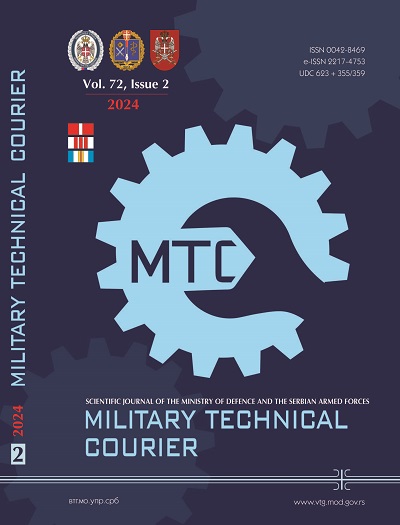Leveraging Blockchain technology to accelerate financial and nonfinancial inclusion and empowerment in developing countries
Abstract
Introduction/purpose: Blockchain is a technology that first came into existence to optimize the cryptocurrency area by forming a decentralized network for online transactions and managing investors' data. With the advent of technology, new ideas have started taking shape in experts' minds regarding the potential of this technology if it were to be used in areas other than just cryptocurrency – mainly Bitcoin. Some of its potential features include security, distributed data, maintaining data integrity, anonymity, and the lack of need for third-party involvement. This research has analyzed the use of Blockchain technology in Pakistan, including its awareness amongst technical experts and the public. The focus areas are using Blockchain technology in hospitals as well as for voting, political documents, financial ledgers, and contracts. The research aimed to investigate which field is most appropriate to use Blockchain technology according to the general public belief.
Methods: A detailed survey has been carried out collecting answers from the public, and gathering expert opinions on the topic. The TOPSIS approach was then applied to determine which fields are the most favored.
Results: The results favored the use of Blockchain technology in the areas of political documentation. Based on the conducted study, there are recommendations and important insights provided from experts to facilitate the improvement of the system in Pakistan.
Conclusion: In conclusion, this study sets out to understand public and expert perspectives on using Blockchain technology in other sectors of the country. As a result of this research work, it is concluded that government/political documentation presents an exciting market for implementing this technology.
References
Angelou, G.N. & Economides, A.A. 2008. A Decision Analysis Framework for Prioritizing a Portfolio of ICT Infrastructure Projects. IEEE Transactions on Engineering Management, 55(3), pp.479-495. Available at: https://doi.org/10.1109/TEM.2008.922649.
Arsyad, A.A., Widayat, I.W. & Köppen, M. 2022. Supporting farming smart documentation system by modular blockchain solutions. Decision Making: Applications in Management and Engineering, 5(1), pp.1-26. Available at: https://doi.org/10.31181/dmame0326022022a.
Chen, C.-T. 2002. A decision model for information system project selection. In: IEEE International Engineering Management Conference, Cambridge, UK, 2, pp.585-589, August 18-20. Available at: https://doi.org/10.1109/IEMC.2002.1038501.
-DAWN. 2017. SBP mulls anti-cybercrime technology. DAWN today's paper, 20 April [online]. Available at: https://www.dawn.com/news/print/1328025 [Accessed: 01 January 2024].
Hsiao, J.-H., Tso, R., Chen, C.-M. & Wu, M.-E. 2017. Decentralized E-Voting Systems Based on the Blockchain Technology. In: Park, J., Loia, V., Yi, G. & Sung, Y. (Eds.) Advances in Computer Science and Ubiquitous Computing. CUTE CSA 2017. Lecture Notes in Electrical Engineering, 474, pp.305-309. Singapore: Springer. Available at: https://doi.org/10.1007/978-981-10-7605-3_50.
Hwang, C.-L., Lai, Y.-J. & Liu, T.-Y. 1993. A new approach for multiple objective decision making. Computers & Operations Research, 20(8), pp.889-899. Available at: https://doi.org/10.1016/0305-0548(93)90109-V.
Kuo, T.-T., Kim, H.-E. & Ohno-Machado, L. 2017. Blockchain distributed ledger technologies for biomedical and health care applications. Journal of the American Medical Informatics Association, 24(6), pp.1211-1220. Available at: https://doi.org/10.1093/jamia/ocx068.
Liu, N., Zhang, J., Zhang, H. & Liu, W. 2010. Security Assessment for Communication Networks of Power Control Systems Using Attack Graph and MCDM. IEEE Transactions on Power Delivery, 25(3), pp.1492-1500. Available at: https://doi.org/10.1109/TPWRD.2009.2033930.
Panisi, F. 2017. Blockchain and 'Smart Contracts': FinTech Innovations to Reduce the Costs of Trust. SSRN, 1 November. Available at: https://doi.org/10.2139/ssrn.3066543.
Puška, A., Stilić, A. & Stojanović, I. 2023. Approach for multi-criteria ranking of Balkan countries based on the index of economic freedom. Journal of Decision Analytics and Intelligent Computing, 3(1), pp.1-14. Available at: https://doi.org/10.31181/jdaic10017022023p.
Rezazadeh, J., Bagheri, R., Karimi, S., Nazarian-Jashnabadi, J. & Nezhad, M.Z. 2023. Examining the Impact of Product Innovation and Pricing Capability on the International Performance of Exporting Companies with the Mediating Role of Competitive Advantage for Analysis and decision making. Journal of Operations Intelligence, 1(1), pp.30-43. Available at: https://doi.org/10.31181/jopi1120232.
Sahoo, S.K. & Goswami, S.S. 2023. A Comprehensive Review of Multiple Criteria Decision-Making (MCDM) Methods: Advancements, Applications, and Future Directions. Decision Making Advances, 1(1), pp.25-48. Available at: https://doi.org/10.31181/dma1120237.
Tešić, D. & Marinković, D. 2023. Application of fermatean fuzzy weight operators and MCDM model DIBR-DIBR II-NWBM-BM for efficiency-based selection of a complex combat system. Journal of Decision Analytics and Intelligent Computing, 3(1), pp.243-256. Available at: https://doi.org/10.31181/10002122023t.
Trojan, F. & Morais, D.C. 2012. Prioritising alternatives for maintenance of water distribution networks: A group decision approach. Water SA, 38(4). Available at: https://doi.org/10.4314/wsa.v38i4.11.
Ul Haq, H.B., Irfan, M. & Saqlain, M. 2023. The Concept of Blockchain and its Application: A Review. Theoretical and Applied Computational Intelligence, 1(1), pp.49-57. Available at: https://doi.org/10.31181/taci1120236.
Velasco, P.R. 2017. Computing Ledgers and the Political Ontology of the Blockchain. Metaphilosophy, 48(5), pp.712-726. Available at: https://doi.org/10.1111/meta.12274.
Wang, Y. & Kogan, A. 2018. Designing confidentiality-preserving Blockchain-based transaction processing systems. International Journal of Accounting Information Systems, 30, pp.1-18. Available at: https://doi.org/10.1016/j.accinf.2018.06.001.
Copyright (c) 2024 Ali Gohar

This work is licensed under a Creative Commons Attribution 4.0 International License.
Proposed Creative Commons Copyright Notices
Proposed Policy for Military Technical Courier (Journals That Offer Open Access)
Authors who publish with this journal agree to the following terms:
Authors retain copyright and grant the journal right of first publication with the work simultaneously licensed under a Creative Commons Attribution License that allows others to share the work with an acknowledgement of the work's authorship and initial publication in this journal.
- Authors are able to enter into separate, additional contractual arrangements for the non-exclusive distribution of the journal's published version of the work (e.g., post it to an institutional repository or publish it in a book), with an acknowledgement of its initial publication in this journal.
- Authors are permitted and encouraged to post their work online (e.g., in institutional repositories or on their website) prior to and during the submission process, as it can lead to productive exchanges, as well as earlier and greater citation of published work (See The Effect of Open Access).

